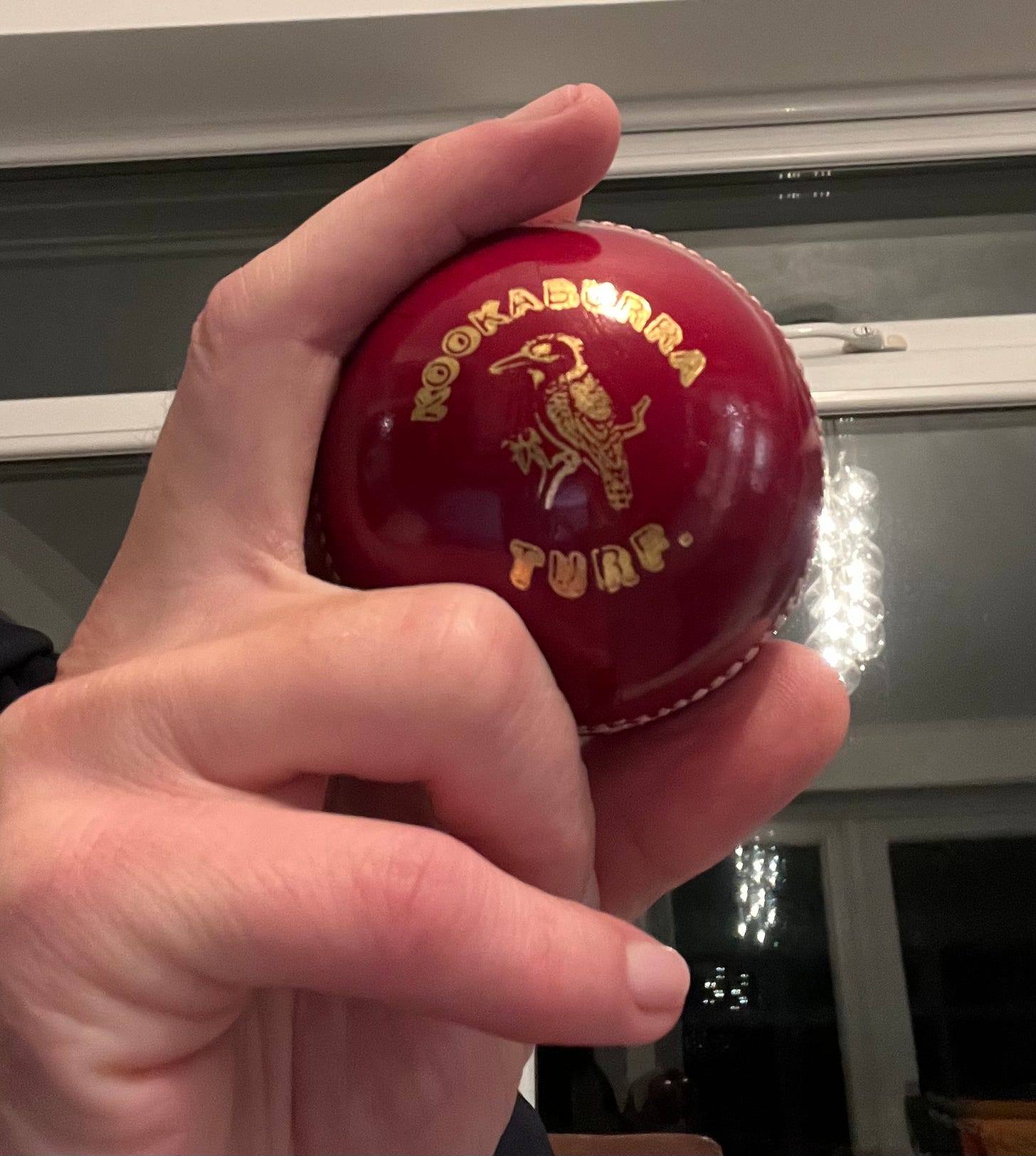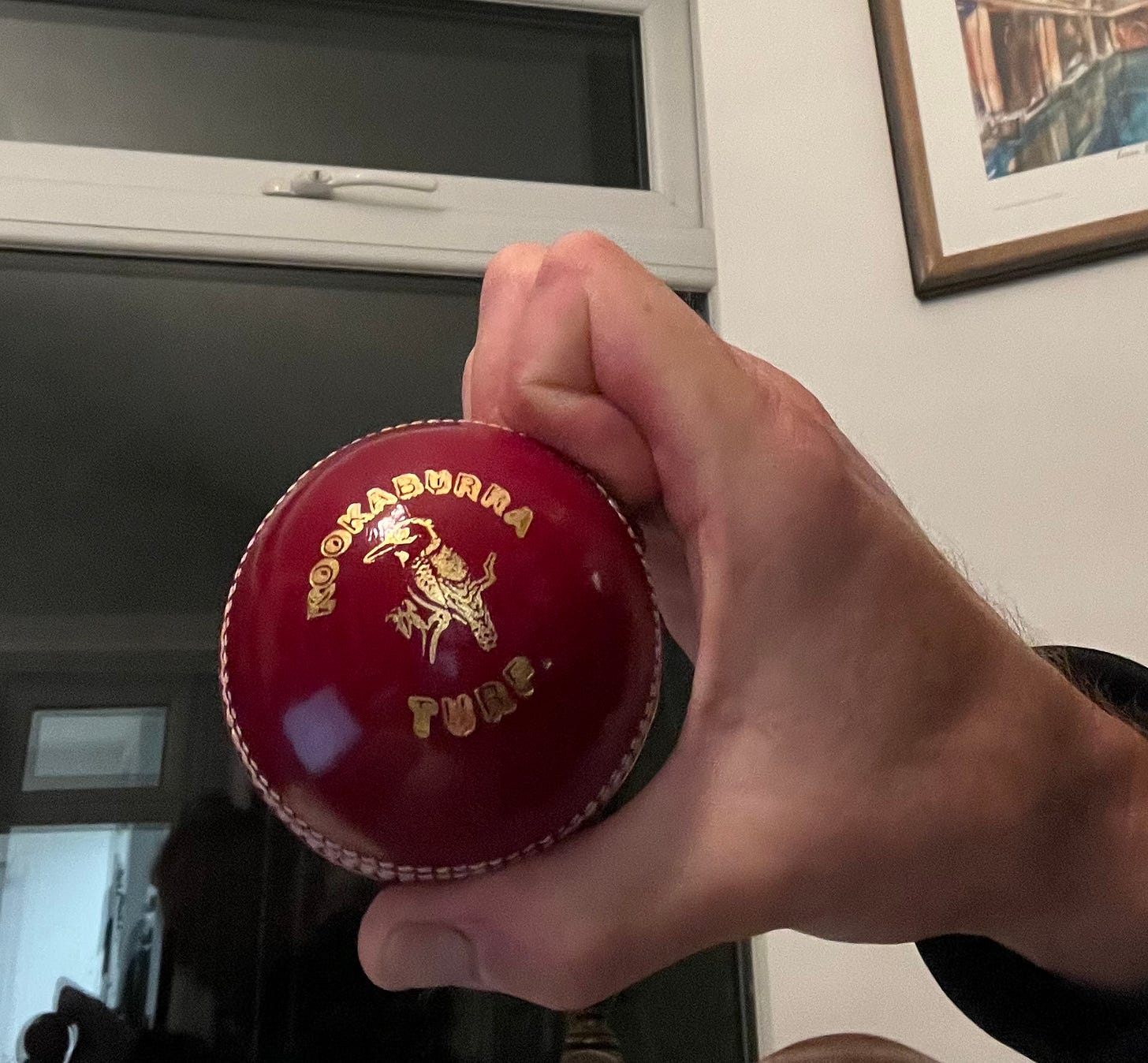The One Delivery Bowlers Fear Using In Games But Should Master.
It's a potent weapon for club bowlers.
Nothing beats the "go mad" sessions.
It's the kind of training session where batters and bowlers can show up and let loose—try whatever wild ideas they've got brewing, get it out of their system, and scratch that curiosity itch.
I used to keep printouts at the back of the net for bowlers, showing off the different grips baseball pitchers use on the ball.
The instructions were straightforward: I don’t care where the ball lands or how it comes out of your hand. Just try everything—see what works and what doesn’t. If you find something that clicks, let’s use it in a game.
I share this quick story because I want you to take action right after reading this blog.
You’ve satisfied your curiosity by learning something new, but the only way to level up your game is to be bold enough to try it at the nets. Practice it, then execute it in a game.
Let's dive in.
The ball that leaves batters flummoxed.
It's the "Knuckle Ball".
It originated in the US and was made famous by a baseball player named Lew Moren in the early nineties. However, it's so hard to execute that most modern baseball pitchers no longer use it.
The first time I saw the knuckleball in cricket was when Zaheer Khan used it during the 2011 World Cup. It turned out to be a full toss that knocked over Australian legend Adam Gilchrist.
The delivery was noticeable because it was dramatically slower, but Khan's arm rotation didn't seem to slow down, and the ball was in a seam-up position.
So, no cues were available for the viewer or batter to spot.
Khan said he had consciously decided to introduce it to the World Cup and explained his thought process.
"It came into existence because of my action and maybe the mobility in my shoulder. I could not bowl a slower back-of-the-hand one, so I tried that, but it didn't work. The off-cutter I used would change my action, giving batters an advantage in picking it up as a slower ball. So, I thought about what I could do that would work for my bowling style.
I had seen Charl Langeveldt, the South African bowler, run in and just use his fingers on the seam. It wasn't exactly a knuckleball, but it involved getting the fingers on the seam and slowing the ball down.
I took that cue to the next level by not using the fingers at all and just bowling the knuckleball with my knuckles. That release would slow the ball down considerably without any noticeable change in my action or arm speed."
Up until this point, bowlers only used cutters by rolling their wrist across the ball or letting it go out the back of the hand.
The issue with this is that it signalled to the batter early what the bowler was trying to do because there were apparent changes in action.
If the batter missed the bowler’s release of the ball, they’d also get another chance because the ball would come down with a scrambled seam.
Zaheer Khans' knuckleball left me and the commentators perplexed.
What emerged from that India-Australia clash was a brilliant delivery that top players like Trent Boult, Pat Brown, Andrew Tye, and Josh Davey now utilise.
I presume there are many more who use it.
Here's The Technique:
Grip:
Place your index and middle fingers on top of the ball, with the inside of your knuckles resting on the seam (like a normal seam-up grip position)
Keep your fingers loose on the ball during your load-up to avoid giving the batter any clues.
As you prepare to bowl, apply slight pressure with your fingertips. Your fingers should grip the ball as late as possible.
Release:
Roll the ball back into your thumb and then roll your knuckles so the backs of your fingers align with the seam, scrunching them back towards your palm as if you’re clenching your fist.
Keep your knuckles behind the ball, allowing it to sit deep in your hand.
With less contact from your fingers, the ball comes out at a slower speed, even with the same arm speed you’d use for a standard delivery.
The best part?
The ball exits your hand in an upright seam position, so the batter won’t see any cues that this delivery is different from your stock ball.
Practice:
Perfecting the length and accuracy of your delivery takes time.
Experiment with the technique and have fun doing it. Practice with a keeper or someone with a mitt.
Don’t get discouraged if it doesn’t work right away. The aim is to satisfy your curiosity and refine your technique as you go.
Execution:
Keep your arm speed consistent while releasing the ball at a slower pace.
The key is maintaining an upright seam, making it harder for the batter to pick up.
The knuckleball is more effective than other slower deliveries or off-cutters because it doesn’t show a noticeable grip change at release, making it more challenging for the batter to detect.
Check out this example:
Look at Somerset seamer Josh Davey, whom I worked with for a year. His knuckleball is so discrete that even players at the top of their game can't pick it up.
Things to Note:
During Josh's load-up, he keeps his grip change as discreet as possible. He changes his grip late and when the ball is right by his side to avoid giving the batter any clues.
Zaheer Khan does things differently. He carries the ball in his non-bowling hand while running in, then switches it to his bowling hand just before releasing it. My advice? Find the method that works best for you.
Batters often look for cues from the release point above the bowler's head. Changing your grip lower and closer to your side, like in Josh Davey's video, makes the change harder to detect.
For maximum effectiveness, release the ball seam-up. This helps generate unpredictable movement in the air and makes it tough for the batter to pick up.
When you bowl, flick your wrist and release the ball with minimal spin. But at the same arm speed. The secret is in your fingers—they control the ball's wobble. The less spin, the more the ball moves erratically, making it difficult for the batter to predict.
Experiment with the delivery, preferably with a keeper or someone with a mitt who can give you feedback. Don’t worry if it doesn’t work perfectly at first; the goal is just to give it a shot, and over time, it will become second nature.
Final Thoughts.
Challenge yourself to put it into practice.
It’ll elevate your game and set you apart from other bowlers.
The knuckleball also outshines other change-up deliveries, like the back-of-the-hand slower ball and off-cutters, because it doesn’t show a noticeable grip change at release, making it harder for batters to read.
I see plenty of bowlers, especially in club cricket, happy sticking to easier-to-execute deliveries or hoping and wishing their stock delivery does enough when the batters are on top.
Now’s the time to be a little gutsy if you want to level up your game.
It won’t be easy, but the effort will pay off.
Mastering the knuckleball isn’t easy, even for the pros. Khan admitted it went for six the first time he tried it in a domestic match.
Zaheer Khan said:
"It took me about a year to learn because I tried to change my grip in my run-up, which was very difficult. I don’t know how bowlers do that. The ball is hard. Every time I bowled with a new ball, the skin would come off, and it would be bleeding. The hardness of the skin takes care of it. So yeah, that’s how it works, but it pays great dividends."
One last thing to keep in mind
For some, the knuckleball might be out of reach because of genetics.
During my professional career, I had to rely on the off-cutter instead because my short, thin fingers made it a real challenge to grip the ball properly in the knuckles.
So I had to look for other options.
The deception is pace off with disguise, and the ball drops and dies in the air.
If you can pull this off in a club game, it's a nightmare for batters.
It's why I believe it's one worth mastering.







